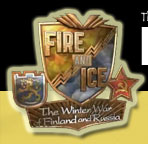

Teacher Guide Classroom Activities
INTRODUCTION
In November 1939, when Finland was invaded by the Soviet Union, no one expected this tiny nation would resist the largest military force in the world. Also, no one anticipated one of the coldest winters in recorded history. Outnumbered and outgunned, Finns knew the war was not about territory; it was a total war for their very existence as a people. They united against a common enemy as never before. The Winter War was an epic life-and-death struggle that changed the course of World War II, and saved a democracy.
CONTENTS
This curriculum guide is to be used with the Fire and Ice: The Winter War of Finland and Russia DVD. To accompany this DVD there are five essays, each followed by a lesson plan and activity. The lesson plans include objectives, discussion questions, activities and extensions for each of the essays. You might want to use one or all of the lessons and activities, depending on the grade levels taught. All are meant to be used in conjunction with the Fire and Ice: The Winter War of Finland and Russia DVD. You will need to photocopy each essay to be distributed to each student.
It is recommended that you screen the entire program at least once so you can target segments that you would like to review with students prior to the activities. The Fire and Ice: The Winter War of Finland and Russia DVD and lesson plans can be used over several weeks as students become more familiar with the prominent, but often forgotten, role that the Winter War played in the war strategies of World War II. This curriculum guide includes the following sections:
DOWNLOADS
Complete Guide Word / PDF
Activity 1: Communism vs. Fascism Word / PDF
The conflicts as well as political and economic rivalries that brought
the Soviet Union into World War II and the specific invasion of Finland.
Activity 2: The Molotov-Ribbintrop Pact Word
/ PDF
The motive and consequences of the Soviets' non-aggression
pact with Germany.
Activity 3: The Uniter and the Divider Word
/ PDF
The political and diplomatic leadership styles of Josef Stalin (Russia) and
C.G.E. Mannerheim (Finland).
Activity 4: Low Tech Meets High Tech Word
/ PDF
The importance of industrial production
and the application of technology in the strategies, tactics and
overall destruction during the Winter War.
Activity 5: It Was Supposed To Be a Quick Victory Word
/ PDF
The Winter War’s influence on
warfare in Western Europe and the Soviet Union.





